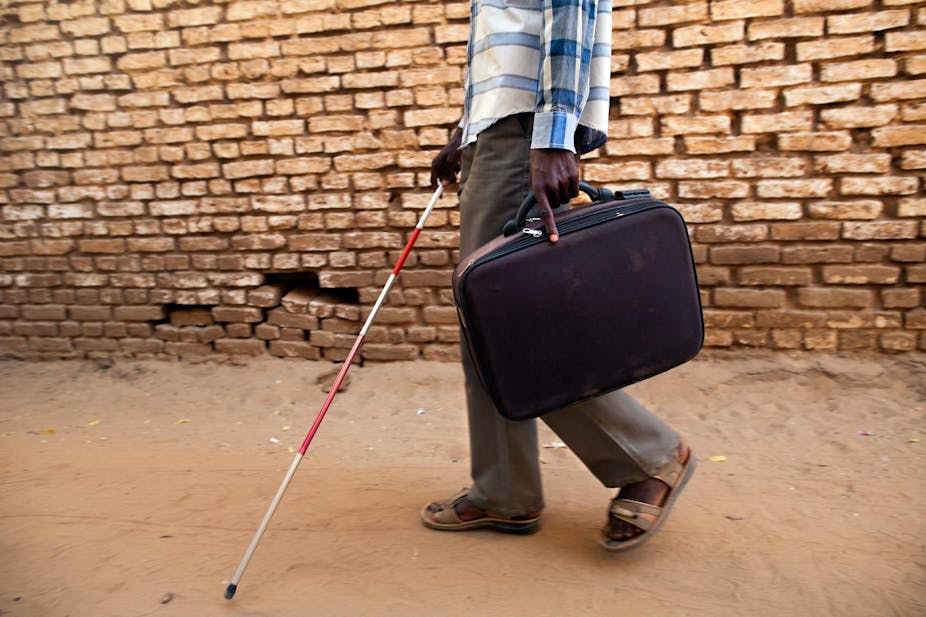On paper, people with disabilities in South Africa enjoy the same rights as anyone else to an education, whether at school or university. The country’s constitution prohibits the state from unfairly discriminating “directly or indirectly against anyone on the grounds of disability”. South Africa is also a signatory to the United Nations Convention on the Rights of Persons with Disabilities. This obliges the state “to take proactive measures to ensure that the rights of persons with disabilities are promoted and protected”.
Universities, too, are obliged to reasonably accommodate those with disabilities. They must provide appropriate support services that are tailored to individuals’ educational needs.
The Higher Education Institutional Culture, Equity and Transformation Group at Rhodes University has been exploring disabled students’ experiences of universities. Our work, which will be presented at three different conferences in the latter half of 2016, suggests that many universities are not meeting their obligations to these students.
Universities are excluding, disabling
Most universities have, to date, responded to disabled students’ presence by drawing from what’s been called the “medical model” of disability. This model frames disability as an individual physical problem that’s inherent in a person’s own body. It emphasises the ways in which a disabled person lacks the capacity to fit into the existing institutional framework or environment – and so needs to be accommodated, if possible.
The alternative is to see the ways in which environments that are geared towards those who are regarded as “normal” are themselves excluding and disabling. It’s not disabled people who lack capacity: the lack lies in how these environments operate and what assumptions those who occupy them have about what is “normal”.
For example, institutions might see the person who needs a ramp to access a building as someone who needs to be “accommodated”. Instead environments should be seen as disabled when they don’t, as a matter of course, provide access to all humans regardless of their physical makeup.
Students with disabilities find that they must accommodate themselves to institutional contexts that are, from their point of view, profoundly disabling. The onus is placed on the student to “fit in”. These students often find themselves unable to access higher education. They make up less than 1% of South Africa’s total student population in post-secondary education and training. In total, 2.9 million South Africans – 7.5% of the population – are disabled.
When people with disabilities make it past the initial hurdles and into higher education, they’re often on the margins of university life – not just academically, but also socially.
More than financial barriers
The National Student Financial Aid Scheme provides bursaries specifically for students with disabilities. This money is meant to cover tuition, accommodation, meals and transport costs. It also pays for materials prescribed by the institution and one or more assistive devices, like wheelchairs.
But simply removing financial barriers and providing access to a disabling environment is not enough.
Many universities still don’t even have disability units. There have been several instances of students being turned away because universities don’t have the facilities to accommodate them. Even when access isn’t denied outright, though, students with disabilities face attitudinal and physical barriers. It’s not unreasonable to expect universities to provide sign language interpreters, ramps, assistive devices, carers and the like. Society must take its obligations to all its members seriously, regardless of their physical traits.
International examples prove that this can be done. In Sweden, 0.3% of the annual university budget is earmarked for meeting the different needs of students with disabilities. Canadian universities do well in supporting students with disabilities, too. Cornell University in the US has done excellent, practical work around this issue.
Canaries in the coal mine
Students with disabilities can be seen, in many ways, as the canaries of South Africa’s higher education system. They alert society to the ways in which universities continue to preach “inclusion” without asking the important question: included into what and by whom?
Universities must think carefully and engage fully with what it might mean to create cultures that are friendly to disability. This might provide new insights into the multiple ways in which dominant norms and practices do violence to those whose lives and experiences they exclude, ignore, denigrate and fail to recognise as fully human, deserving of equal respect and consideration. Inclusion into unchanged cultures, physical environments and day-to-day practices does not make institutions more just. It is institutions, not students, that are disabled and disabling.
Authors’ note: Are you an academic, Master’s or Doctoral student conducting research related to the experiences of students with disabilities in South African universities? If so, we would like to invite you to contribute a chapter to a new book. For more information or to send a concept note, contact Des Chiwandire on chiwandiredesire@gmail.com.

